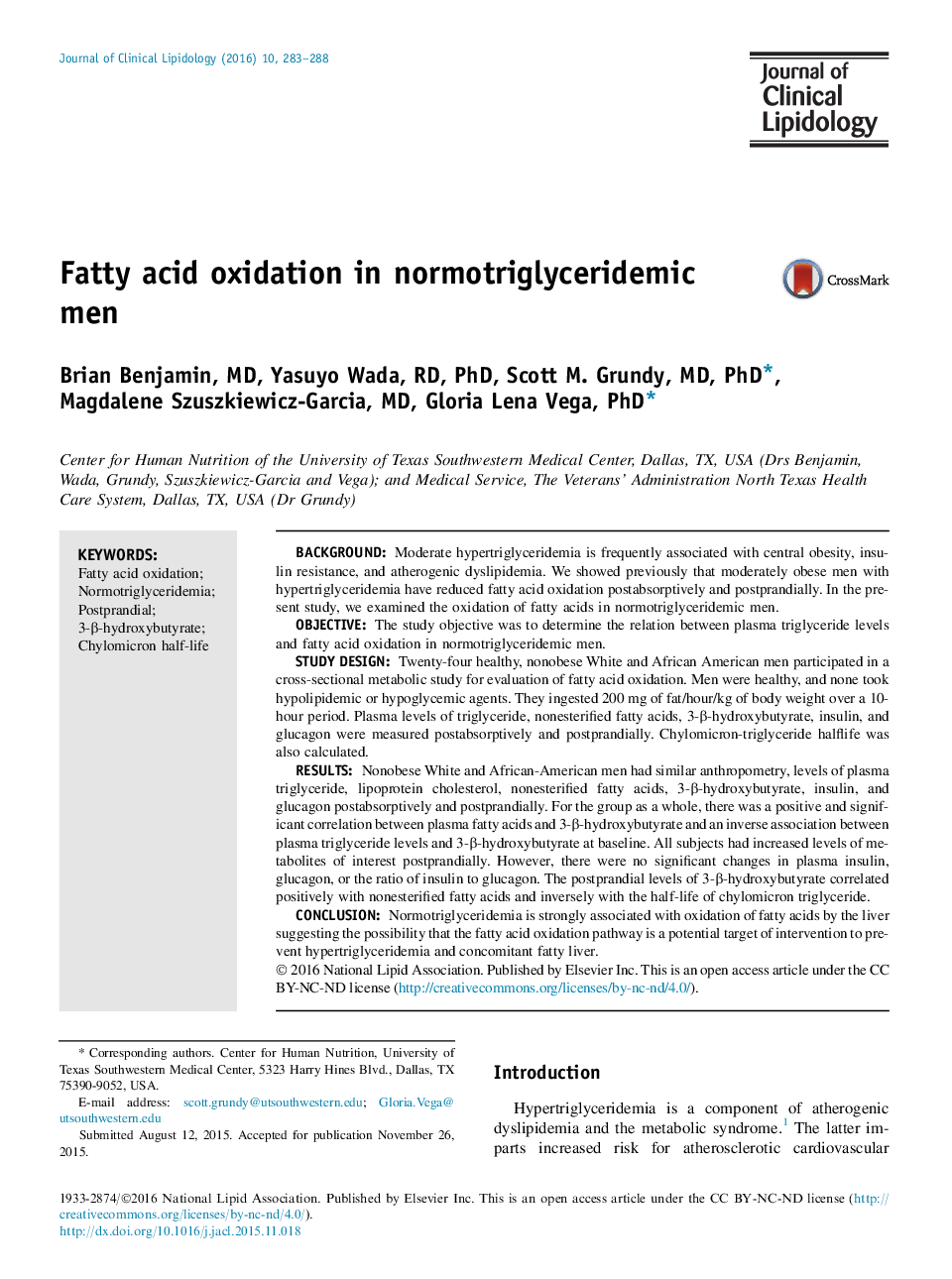| Article ID | Journal | Published Year | Pages | File Type |
|---|---|---|---|---|
| 5985232 | Journal of Clinical Lipidology | 2016 | 6 Pages |
â¢Low levels of plasma triglyceride correlate with levels of 3-β-hydroxybutyrate.â¢Baseline and postprandial levels of 3-b-hydroxybutyrate correlate with NEFA.â¢3-b-hydroxybutyrate levels are a surrogate for hepatic b-oxidation of fatty acids.â¢The results suggest that low TG levels result from efficient oxidation of NEFAs.
BackgroundModerate hypertriglyceridemia is frequently associated with central obesity, insulin resistance, and atherogenic dyslipidemia. We showed previously that moderately obese men with hypertriglyceridemia have reduced fatty acid oxidation postabsorptively and postprandially. In the present study, we examined the oxidation of fatty acids in normotriglyceridemic men.ObjectiveThe study objective was to determine the relation between plasma triglyceride levels and fatty acid oxidation in normotriglyceridemic men.Study designTwenty-four healthy, nonobese White and African American men participated in a cross-sectional metabolic study for evaluation of fatty acid oxidation. Men were healthy, and none took hypolipidemic or hypoglycemic agents. They ingested 200 mg of fat/hour/kg of body weight over a 10-hour period. Plasma levels of triglyceride, nonesterified fatty acids, 3-β-hydroxybutyrate, insulin, and glucagon were measured postabsorptively and postprandially. Chylomicron-triglyceride halflife was also calculated.ResultsNonobese White and African-American men had similar anthropometry, levels of plasma triglyceride, lipoprotein cholesterol, nonesterified fatty acids, 3-β-hydroxybutyrate, insulin, and glucagon postabsorptively and postprandially. For the group as a whole, there was a positive and significant correlation between plasma fatty acids and 3-β-hydroxybutyrate and an inverse association between plasma triglyceride levels and 3-β-hydroxybutyrate at baseline. All subjects had increased levels of metabolites of interest postprandially. However, there were no significant changes in plasma insulin, glucagon, or the ratio of insulin to glucagon. The postprandial levels of 3-β-hydroxybutyrate correlated positively with nonesterified fatty acids and inversely with the half-life of chylomicron triglyceride.ConclusionNormotriglyceridemia is strongly associated with oxidation of fatty acids by the liver suggesting the possibility that the fatty acid oxidation pathway is a potential target of intervention to prevent hypertriglyceridemia and concomitant fatty liver.
